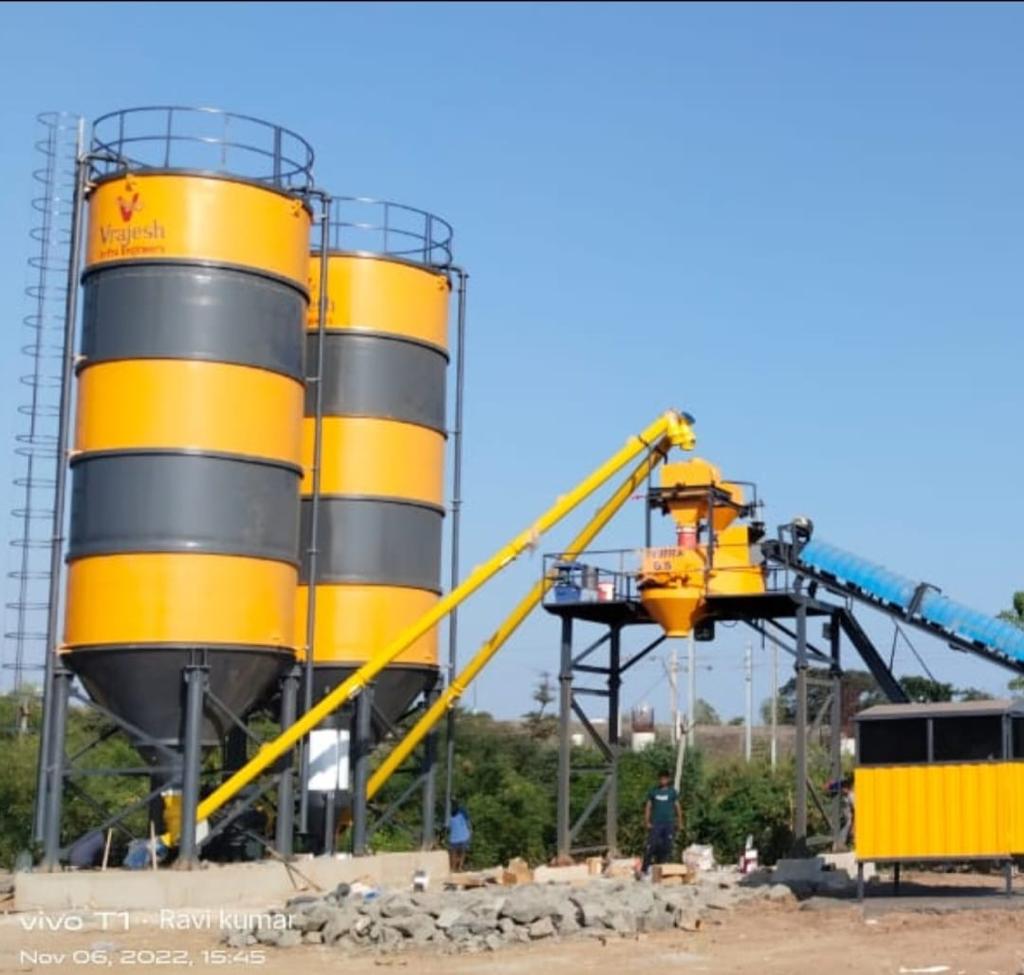Get In Touch
Get In Touch




A cement silo is a specialized storage container designed to securely store bulk quantities of cement, a crucial component in construction. These structures, typically made of steel or reinforced concrete, protect cement from moisture, contaminants, and adverse environmental conditions, ensuring its quality. Cement silos come in various sizes and designs, with capacities ranging from a few tons to thousands of tons, catering to the needs of construction projects of varying scales. They feature airtight seals, level indicators, and efficient dispensing systems, making cement readily accessible for concrete production, ensuring construction sites have a steady supply of this essential building material.
1. Material of Construction: Typically constructed from robust materials like welded or bolted steel, or reinforced concrete for durability and longevity.
2. Capacity: Varies widely, with capacities ranging from small, portable silos (typically 20-100 tons) to larger stationary silos (100 tons to several thousand tons) to suit different construction project needs.
3. Design Type: May be vertical, horizontal, or mobile, with cone-bottom or flat-bottom options, depending on space and project requirements.
4. Aeration System: Equipped with aeration devices such as fluidizing pads to maintain cement quality and flowability.
5. Loading/Unloading Systems: Often includes equipment like screw conveyors, pneumatic conveyors, or bucket elevators for efficient loading and unloading of cement.
6. Ventilation: Proper ventilation systems to control dust emissions and maintain air quality, often equipped with dust collectors.
7. Pressure Relief Valve: A safety feature to prevent over-pressurization of the silo.
8. Level Indicators: Instruments like rotary paddle level indicators or radar sensors to monitor cement levels inside the silo.
9. Accessories: Inspection hatches, manholes, and safety features like ladders, platforms, and railings for personnel access and fall protection.
10. Sealing: Ensures an airtight and moisture-tight environment to preserve cement quality.
11. Insulation: Optional insulation for temperature control, especially in regions with extreme weather conditions.
12. Coating: Exterior coatings for protection against corrosion and environmental elements.
13. Maintenance Requirements: Guidelines for routine inspections, cleaning, and maintenance to ensure continued functionality.
14. Environmental Compliance: Designed and constructed in accordance with environmental regulations, including emissions control and dust management.
15. Foundation: A stable foundation capable of supporting the weight of the silo, often including anti-settling measures.
1. Concrete Production: Cement silos are a fundamental component of concrete batching plants. They store bulk quantities of cement, ensuring a continuous and controlled supply for the concrete mixing process.
2. Construction Sites: Cement silos are often set up at construction sites to provide on-site storage of cement. This minimizes the need for frequent cement deliveries and ensures a readily available source for construction teams.
3. Ready-Mix Concrete Plants: These silos play a crucial role in ready-mix concrete production, providing the necessary cement for various mixes and grades, ensuring consistent quality.
4. Precast Concrete Manufacturing: Precast concrete facilities use cement silos to store cement and other additives for the production of precast concrete components such as panels, beams, and blocks.
5. Masonry and Mortar Production: Cement silos are employed in masonry and mortar production to store and dispense cement for bricklaying and plastering.
6. Highway and Road Construction: Mobile cement silos are used for road construction projects, offering mobility and efficiency in supplying cement for projects like highways and bridges.
7. Tunnel Construction: Cement silos are used in tunnel construction projects to ensure a constant and reliable source of cement for tunnel lining and infrastructure.
8. Infrastructure Projects: Large-scale infrastructure projects, such as airports and dams, rely on cement silos to meet the substantial cement demands for these projects.
9. Wind Energy: Cement silos are utilized in wind turbine foundation construction, ensuring a consistent supply of cement for the installation of wind turbine bases.
10. Railway and Transportation Projects: Cement silos support railway and transportation infrastructure projects by providing cement for various applications like platform construction and rail bed stabilization.
11. Agricultural Construction: Cement silos are used in agricultural settings for grain storage and in the construction of silos for animal feed storage.
12. Environmental Remediation: Cement silos play a role in environmental remediation projects, such as the construction of containment structures for hazardous waste or pollution control systems.
13. Industrial Buildings: Cement silos are employed in the construction of industrial facilities, including warehouses, manufacturing plants, and distribution centers.
14. Oil and Gas Industry: Cement silos are used in the oil and gas sector for various applications, including drilling operations, pipeline construction, and infrastructure projects.
15. Specialized Projects: Cement silos can be adapted for unique applications, such as artistic installations, architectural projects, and research and development efforts.


